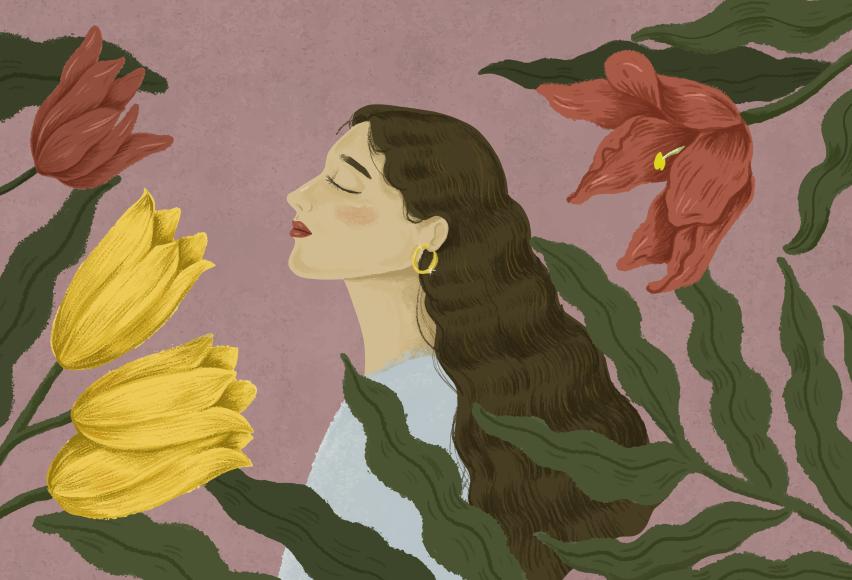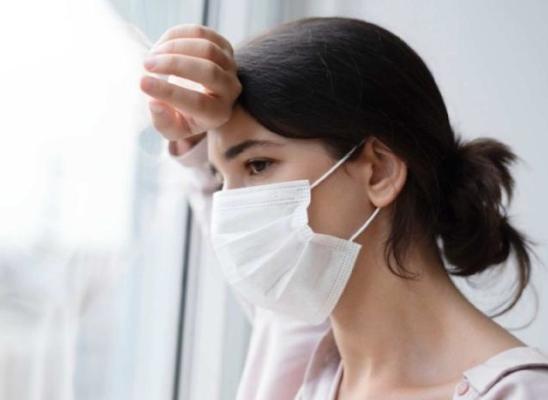Living with Trich: More Wisdom from the Real Experience

Online test
Find out the severity of your symptoms with this free online test
If you or a loved one is living with trichotillomania, you are not alone. While the exact numbers are not known, it’s estimated that trich affects about 2% of the population, or about 5 million people in the U.S. alone. While hair pulling is the dominant feature, it isn’t uncommon for trich to be accompanied by other disorders including depression, anxiety, ADHD, and PTSD. About 20% of people with trich also develop a related disorder known as trichophagia.
One of the things we know about trich is that it is highly heterogenous meaning that it can present in different ways and not everyone experiences trich in the same way. For some, trich can be highly disruptive in their lives. For others, they are able to find a place of acceptance and ways to manage their pulling. Some people seem to just be simply unbothered by it.
While research can tell us a lot about trich the disorder, it’s difficult to capture the experience of living with trich. Just what is it like living with trich? What are the real issues that people face?
To really understand the experience of living with trich, it makes sense to look to those who live it every day. A number of people living with trich have chosen to share their experiences publicly in various blogs, articles, and forums. While each of their stories is unique, their experiences also reveal some similarities. One of the most commonly mentioned struggles is that of resources or lack thereof. Whether it’s feeling alone or seeking treatment, finding help and support isn’t always easy.
Am I the Only One?
One of the most common issues mentioned by many of the people who share their experiences is the feeling of being alone or isolated. The fear of judgment by others is significant for people living with body-focused repetitive disorders (BFRBs). Social interactions can exacerbate those feelings. Feelings like shame, embarrassment, and even fear of being “found out” are common and these fears can keep someone from seeking help or even sharing their struggle with those closest to them.
With trich often emerging in school-age children, facing the reactions of their peers was a common struggle mentioned by many of those who shared their stories. Attempts to hide the results of their hair pulling created feelings of embarrassment and isolation.
One person shared “I felt like I couldn’t tell anyone about it. I was worried they would think I was insane and I felt ashamed that I had seemingly brought this on myself.” This was a sentiment echoed by many others. She also notes that in hindsight, she wishes she’d told someone and recommends confiding in someone you trust.
Another person shared that in her experience, her hair pulling wasn’t really talked about. It was known by others, even those closest to her, but after awhile, they simply didn’t talk about it much - “…this was my secret to be carried around and hidden for fear of being judged and misunderstood.”
The Quest to Find Help
A good number of people who have shared their experiences mentioned their frustrating quest to find help and support. Not surprisingly, some turned to the internet for help. The internet is now the first stop for most people looking for information and services. But, instead of help, one writer shared that what she found was more “horror stories” about trich than helpful information and it stoked her insecurities, keeping her from reaching out. After learning more about her trich that included trichophagia, she feared even approaching her primary care doctor: “I started to write an email to my GP to ask for advice, but I couldn’t bring myself to send it. What if they hadn’t even heard of trichophagia?” The fear of being judged was real.
She’s not alone in that fear. Professionals vary in their experience with BFRBs. In fact, even the choice of seeing a medical professional, like a dermatologist, or a behavioral health professional may influence what happens next. It’s important to know this because sometimes the first attempt to seek treatment isn’t always successful. Another person mentioned her experience with doctor’s appointments even before seeking help and how the doctor’s reactions made her feel. She later did go on to find treatment and notes that therapy can be very helpful but that it required “a lot of determination and grit.”.
For many, therapy has had a place in their lives and been helpful to varying degrees. While there is no “cure”, most of those who have shared their stories describe trich as waxing and waning over time, akin to “seasons” as one writer described. This sentiment was echoed by another writer who shared that there will be “good and bad periods”. Therapy can help you learn healthy ways to cope and find a place of acceptance as you navigate through those periods.
The Message: You Are Not Alone
All of the writers emphasized the fact that it’s important to recognize and remember that you are not alone. There are a lot of people out there living with trich every day and finding ways to cope.
Some of the recommendations they share for finding support include:
- Educate yourself about trich. Don’t let the scary stories keep you from seeking help and support. Separate the facts from fiction.
- Seek out support. Whether it’s telling someone you trust or finding a support group, reach out. One writer shared how, when she opened up about her struggle, she found support in a most unexpected person – a compassionate high school teacher. That experience helped her through a difficult time and helped her experience remission for the first time.
Support groups or forums are another great source of support. Being with others have similar experiences and learning how others have navigated their challenges has been shown to be quite helpful. This shared experience is at the heart of support groups and can be helpful for any number of issues, including trich and other BFRBs.
- Seek therapy. There are trained professionals and treatment options that can help. Habit Reversal Therapy (HRT) and cognitive behavioral therapies (CBT) are the first-line treatments for trich and other BFRBs. Therapy can help you feel more confident and in control.
- Find what works for you. It might be fidgets or practicing mindfulness or some other strategy. One writer uses wearable tech to help her recognize her pulling patterns.
If you are living with trich, you are not alone. There is support from people who share your experience. There are effective options for treatment. Reaching out is the first step. As one writer so beautifully stated, “…living with trich means you'll probably have good and bad periods and that's okay. As long as you're doing your best, that's all that matters. You're not alone and I see you.”
References
1. King, R. A., Zohar, A. H., Ratzoni, G., Binder, M., Kron, S., Dycian, A., Cohen, D. J., Pauls, D. L., & Apter, A. (1995). An epidemiological study of trichotillomania in Israeli adolescents. Journal of the American Academy of Child and Adolescent Psychiatry, 34(9), 1212–1215. https://pubmed.ncbi.nlm.nih.gov/7559316/
2. Grant, J. E., Dougherty, D. D., & Chamberlain, S. R. (2020). Prevalence, gender correlates, and Co-morbidity of trichotillomania. Psychiatry Research, 288, 112948. https://pubmed.ncbi.nlm.nih.gov/32334275/
3. Grant, J. E., & Odlaug, B. L. (2008). Clinical characteristics of trichotillomania with trichophagia. Comprehensive psychiatry, 49(6), 579–584. https://www.ncbi.nlm.nih.gov/pmc/articles/PMC2605948/
4. Flannery, M. K. (2021). Untroubled Pullers: An Examination of Individuals with Nonclinical, Chronic Hair Pulling [Unpublished master's thesis]. American University. https://drive.google.com/file/d/1_S9S08PYbm-n-DR9iF3DaKD_7cJyRG66/view
5. Anderson, S., Clarke, V., & Thomas, Z. (2022). The problem with picking: Permittance, escape and shame in problematic skin picking. Psychology and Psychotherapy: Theory, Research and Practice, 96(1), 83-100. https://bpspsychub.onlinelibrary.wiley.com/doi/10.1111/papt.12427
6. My experience of trichotillomania and Trichophagia. (2022, October 19). YoungMinds. https://www.youngminds.org.uk/young-person/blog/my-experience-of-trichotillomania-and-trichophagia/
7. My trichotillomania hair pulling story (and resources). (2022, August 1). Little Miss Momma - life lessons from Ashley Stock - a momma-in-training. https://www.littlemissmomma.com/2022/08/my-trichotillomania-hair-pulling-story-and-resource-list.html
8. Rangu, S., & Castelo-Soccio, L. (2020). Trichotillomania in children and the different approaches between dermatological and behavioral health professionals at an urban tertiary care center. Skin Appendage Disorders, 7(1), 1-7. https://www.karger.com/Article/FullText/510524
9. I've had trichotillomania for over a decade, but here's what i've learned. (2021, October 5). InStyle. https://www.instyle.com/beauty/health-fitness/what-is-trichotillomania
Online test
Find out the severity of your symptoms with this free online test
Start your journey with TrichStop
Take control of your life and find freedom from hair pulling through professional therapy and evidence-based behavioral techniques.
Start Now



